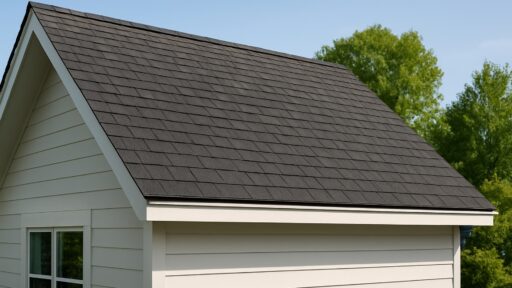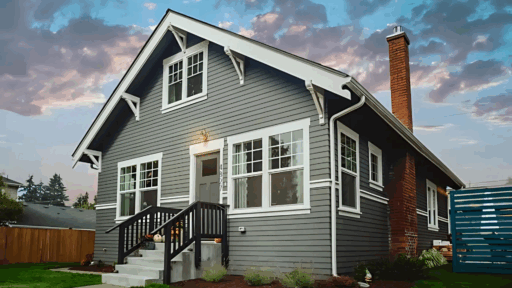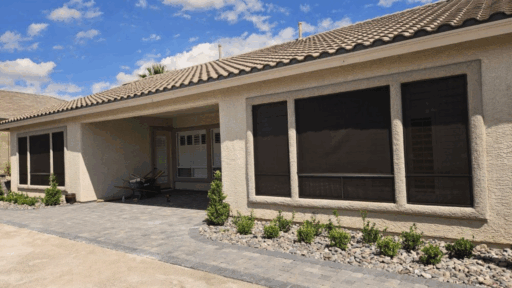Are you puzzled about the difference between a composition roof vs shingles while planning your next home improvement project?
You’re not alone!
Many homeowners get confused when contractors use these terms.
The content breaks down the key differences, helping you make the best choice for your home.
Your roof is your house’s first line of defense against weather, so picking the right material matters.
If you’re replacing an aging roof or building a new home, know your options.
Understanding the pros and cons of composition roof vs shingles will save you money and headaches down the road.
We’ll compare materials, durability, costs, and appearance so you can make a confident choice for the perfect roof for your needs.
What is a Composition Roof?
A composition roof consists of asphalt combined with fiberglass or organic materials, such as cellulose, and is then covered with mineral granules.
This blend of materials gives it its name.
These reliable, affordable roofs are popular in America, available in three types:
- Basic 3-tab shingles
- Dimensional architectural shingles
- Luxury options resembling slate or wood.
While often referred to as “asphalt shingles,” composition roofing provides excellent protection at a reasonable cost.
What Are Shingles
Shingles are overlapping roof pieces that protect your home like armor against rain, snow, and sun.
- Asphalt shingles are most popular due to affordability and reliability.
- Wood shingles offer natural beauty but need more maintenance, while slate provides exceptional durability at a higher cost.
- Metal shingles resist fire and last longer than traditional options.
- Composition shingles, a type of asphalt shingle, are made from multiple materials to enhance their performance and durability.
Most references to “shingles” mean composition or asphalt varieties.
Choosing the right shingles depends on your budget, climate, and desired appearance for your home’s protection.
Key Differences Between Composition Roof vs Shingles
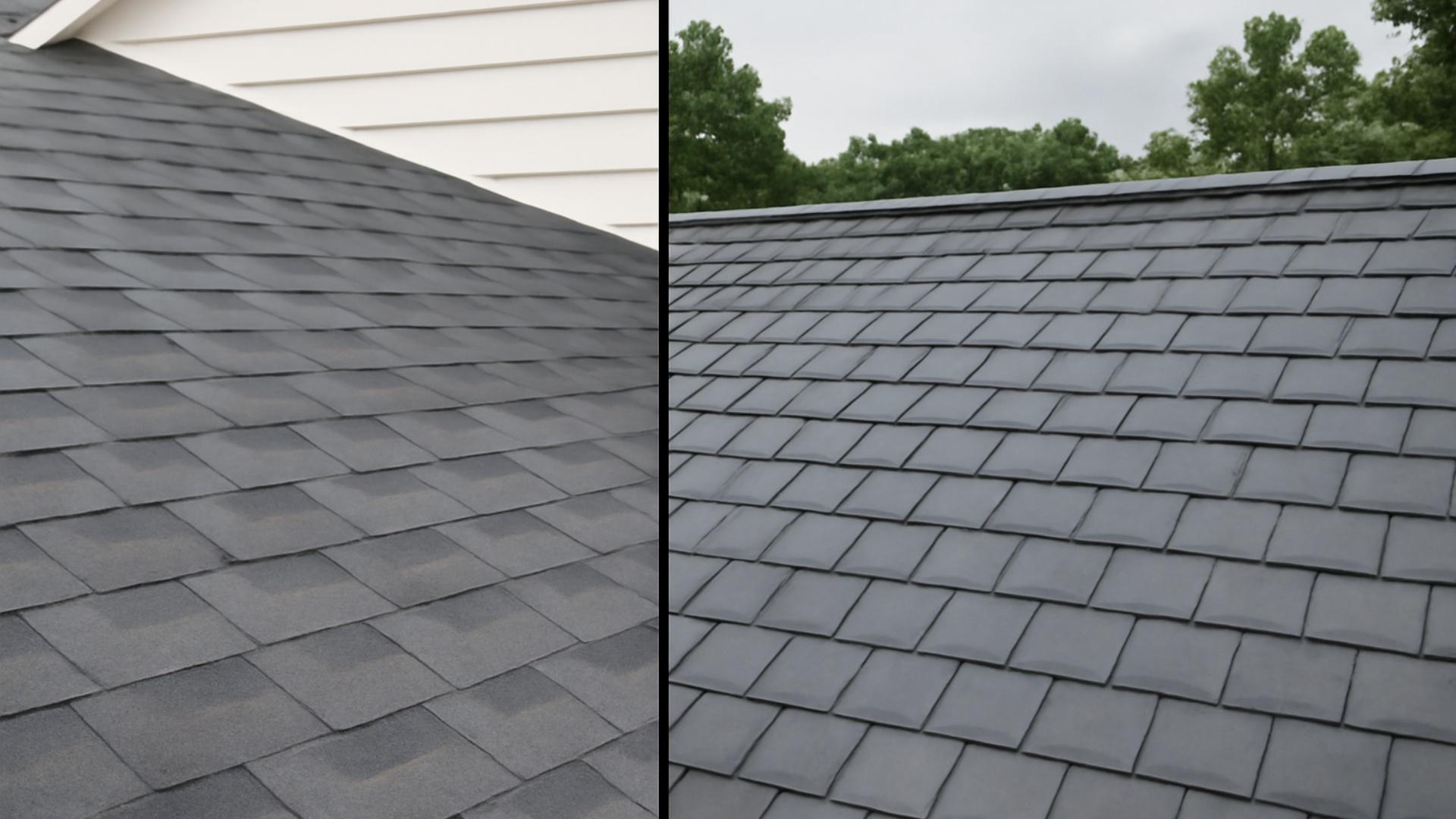
When choosing between a composition roof and traditional shingles, it’s important to consider key performance factors.
Below is a simplified comparison to help guide your roofing decision based on core attributes:
| ASPECT | COMPOSITION ROOF | SHINGLES |
|---|---|---|
| Material Composition | Combination of asphalt, fiberglass, and organic materials. | Typically, asphalt with granule coating. |
| Cost | Higher initial cost due to system integration and materials. | More affordable upfront; cost-effective for quick roofing needs. |
| Durability | Highly durable; can last 30–50 years | Moderate durability; usually lasts 15–30 years. |
| Installation | More complex; usually requires professional roofing contractors. | Easier and faster to install; good for DIY or quick jobs. |
| Maintenance | Lower maintenance needs if well-installed and ventilated. | May require more frequent repairs or shingle replacements. |
| Weather Resistance | Strong resistance to wind, hail, and extreme weather conditions. | Varies; cheaper shingles may be less resistant to harsh conditions. |
| Environmental Impact | Some types utilize recycled materials, which helps reduce waste through longevity. | Less eco-friendly unless specially made; shorter lifespan increases waste potential. |
NOTE: Always consult a licensed roofing professional to assess your home’s structural needs, local climate conditions, and budget before making a decision.
Pros and Cons of Composition Roof vs Shingles
When comparing shingle options to composition roofing, each offers distinct trade-offs in terms of cost, performance, and longevity that homeowners must carefully consider.
Pros
Composition Roof:
Costs $3-8 per square foot with quick installation, universal availability, extensive style options, excellent fire protection, and minimal maintenance requirements for proven residential performance.
Shingles:
Offer multiple material choices from budget to premium options, superior weather protection through overlapping design, easy individual repair, design compatibility with various architectural styles, and effective ventilation integration.
Cons
Composition Roof:
Last only 15-30 years, susceptible to weather damage, prone to algae growth, environmentally unfriendly petroleum-based materials, temperature sensitivity, limited insulation value, and potential wind uplift issues.
Shingles:
Inconsistent lifespans by material, weather vulnerability, regular maintenance needs, labor-intensive installation, and varying environmental impacts.
NOTE: Your choice should balance upfront costs against expected lifespan and climate-specific performance requirements. Always consult with professional roofers to determine the best option for your home.
When to Choose Composition Roof Over Other Shingles
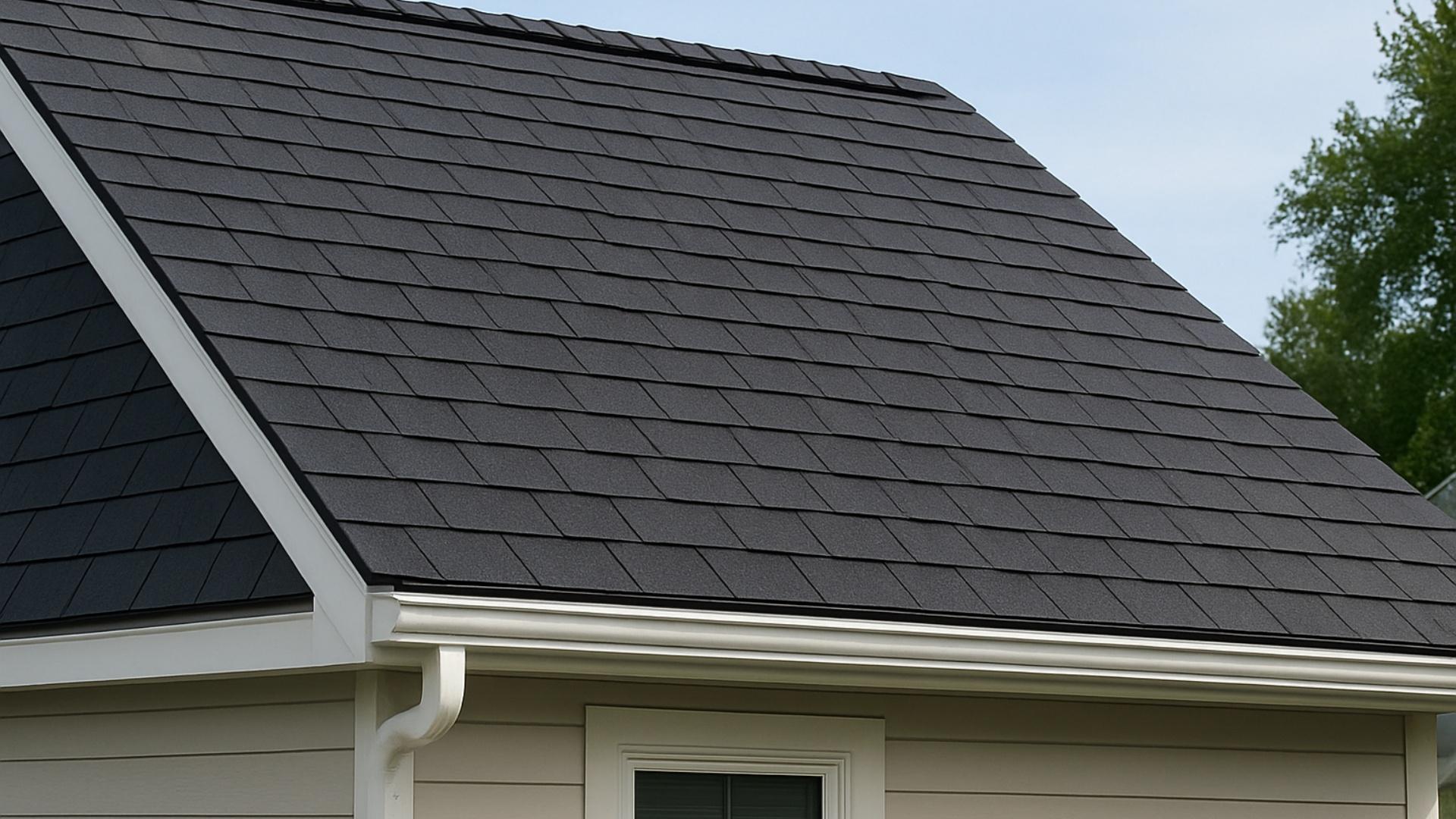
Composition shingles work best for most average homes in moderate climates.
They’re ideal when you have a limited budget but still want a good-looking roof.
These shingles are perfect for standard pitched roofs and work well in areas without extreme weather conditions.
Other materials might be better in certain situations.
Choose slate or metal in areas with heavy snow or frequent hailstorms.
Pick clay tiles for very hot, dry climates.
Select wood shingles for historic homes where maintaining original character is important. Climate plays a big role in your choice.
Composition works well in most areas but may wear faster in places with big temperature swings.
They’re great for ranch, colonial, and most suburban home styles.
The lighter weight of composition makes them suitable for almost any home without needing extra structural support.
Common Misconceptions About Roofing Materials
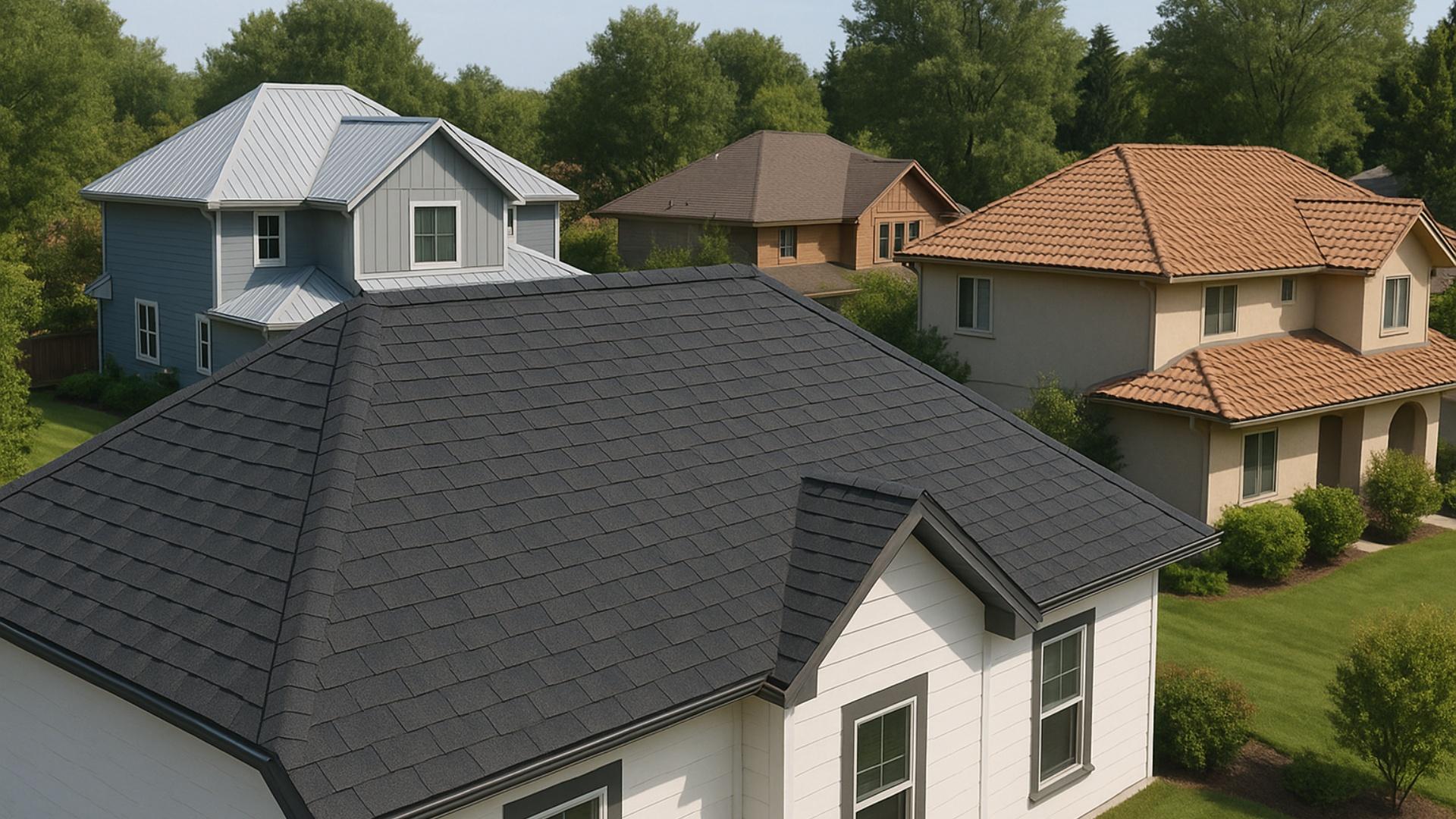
Many homeowners have incorrect ideas about roofing materials that can lead to poor decisions.
Let’s clear up some of these common myths about shingles and composition roofs:
- Not all shingles are created equal, they vary greatly in materials, quality, and performance.
- Expensive doesn’t always mean better, the best roof depends on your specific needs.
- Composition shingles have improved dramatically over the years with excellent quality options.
- Metal and slate roofs last longer but aren’t necessarily “better” for every home or budget.
- The “best” roofing material varies based on your climate, home style, and budget.
- High-end composition shingles can resemble premium materials at a fraction of the cost.
Understanding these facts helps you make a more informed choice based on your actual needs rather than common misconceptions.
The right roof for your home depends on many factors beyond just material type.
The Bottom Line
Now that you understand the key differences between composition roof vs shingles, you can make a confident decision for your home.
Remember that composition shingles offer excellent value for most homeowners, balancing cost with decent durability.
While premium options like slate or metal last longer, they come with a much higher price tag.
Consider your climate, budget, and home style when making your choice.
Whatever you decide, always hire a qualified contractor for installation.
The right roof protects your biggest investment, your home, for years to come.
We hope our blog has cleared up any confusion about composition roof vs shingles.
You now have the knowledge to choose the perfect roof for your needs.
Now you know when composition roofs work best. Find more smart solutions for your home in our home exterior section!

